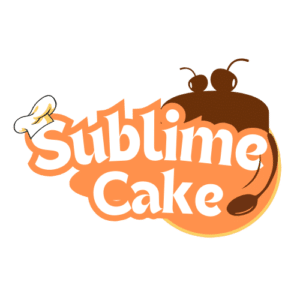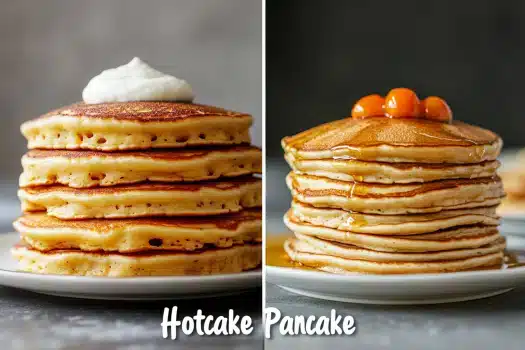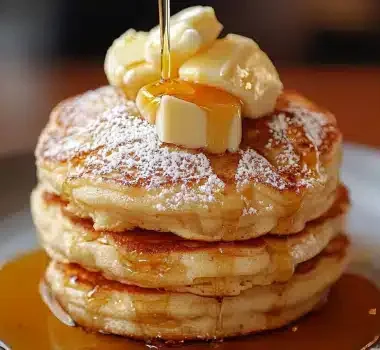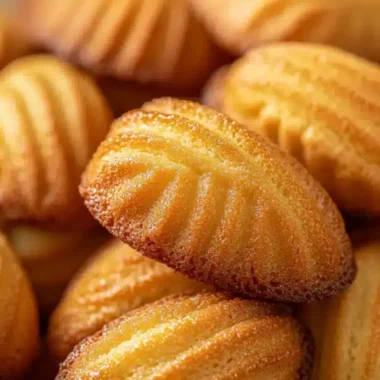The aroma of sizzling pancakes or hotcakes on a weekend morning is undeniably comforting. These breakfast staples are beloved worldwide, but a common question often arises: is hotcake mix the same as pancake mix? While they may seem interchangeable to the casual observer, subtle yet significant differences exist. This article aims to clarify these distinctions, exploring the nuances of each mix, their unique ingredients, textures, and best uses, so that you can select the right one for your breakfast. This guide will delve deep into these differences to assist you in choosing the right mix for your culinary creations.
Defining Hotcakes and Pancakes: A Historical and Cultural Perspective
The Origins of Pancakes
The humble pancake boasts a rich history, with roots stretching back to ancient civilizations. From the flat cakes baked on hot stones in ancient Greece to the simple griddle cakes enjoyed in Rome, pancakes have long been a part of our culinary landscape. These flat cakes evolved over centuries, finding their place in countless cultures across the globe, and gaining different names and flavours along the way.
The Evolution of Hotcakes
Hotcakes, a term primarily used in North America, are a variation of pancakes that have gained popularity for their unique texture. They are often associated with a thicker, fluffier cake cooked on a hot griddle. While sharing many similarities with pancakes, they have developed their own regional variations and characteristics, that differ depending on the area. Over time, hotcakes evolved from basic griddle cakes to the more specific breakfast item we know today.
Common Terminology for Pancakes and Hotcakes
Throughout the world, different terms are used for what is basically the same type of flat cake. In the UK, pancakes are a thin, crepe-like delicacy, while flapjacks are a kind of oat bar. However, in North America, flapjacks may be used interchangeably with pancakes, sometimes even with hotcakes, which leads to some confusion. Griddlecakes is another term that is often used to refer to pancakes, highlighting the use of a griddle in cooking.
Why Regional Terminology Matters When Using Mixes
Understanding regional terminology becomes essential when choosing the right mix. The terms used can indicate the intended texture, thickness, and even flavour profile of the product. For example, if you’re looking for a light and thin pancake, you would choose a product that is labelled as pancake mix. On the other hand, if you prefer a thicker, fluffier hotcake, you should be looking for a hotcake mix. Regional terminology guides consumers’ preferences and expectations, ensuring that your final breakfast is exactly what you want.
Decoding the Mix: Ingredients Comparison Between Hotcake Mix and Pancake Mix
Common Ingredients in Both Mixes
At first glance, both hotcake mix and pancake mix seem very similar, as they share a number of basic ingredients. Both mixes contain a base of flour, a leavening agent (usually baking powder or a combination of baking powder and baking soda), sugar, and salt. These are the basic building blocks to achieve a delicious dish. While these ingredients are common to both, their proportions and types vary considerably.
Key Differences in Ingredient Ratios
The key difference between hotcake mix and pancake mix lies in the ingredient ratios. Hotcake mixes typically contain a higher amount of sugar, which helps create a richer flavor and a more caramelized crust, this is why they become so golden-brown. They might also use a finer flour for a more delicate texture. Furthermore, hotcake mixes often have milk powder to enhance the tenderness and richness of the final product. On the other hand, pancake mixes usually use less sugar, coarser flour and contain less milk powder, creating a neutral base that can be adapted to sweet or savory flavors. The type of fat used is also different, with some mixes using vegetable oil and others using butter.
How Ingredient Differences Impact the Final Product
The differences in the ingredients have a significant impact on the final product. The higher sugar content in hotcake mixes leads to a golden-brown exterior and a sweeter taste. The finer flour gives a more delicate texture. The addition of milk powder contributes to the tenderness and the fluffy interior of hotcakes. On the other hand, pancake mixes, with their lower sugar content, tend to be more adaptable and versatile when it comes to flavour. The coarser flour provides a more robust texture. As you can see the same ingredients but in different amounts will result in a totally different dish.
Reading Labels: How to Differentiate Between the Mixes
When purchasing a mix, reading the labels carefully is key to differentiating between a hotcake mix and a pancake mix. Check the ingredient list and the nutrition facts label to determine if the product suits your needs. The ratio of sugar, flour type and the presence of milk powder is a good indicator of what the mix is for. For example, a product with higher sugar is likely a hotcake mix, while a mix with less sugar and no milk powder is more likely a pancake mix. This knowledge empowers you to make informed decisions when choosing your breakfast ingredients.
Texture and Appearance: How Hotcakes and Pancakes Differ
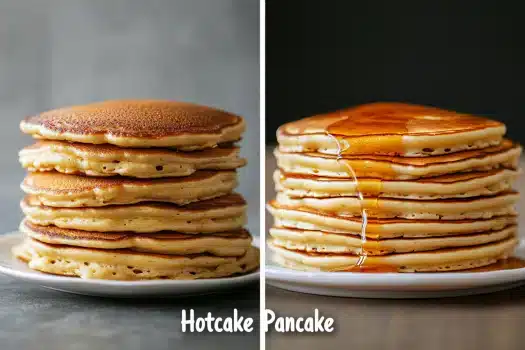
Typical Texture of Pancakes
Pancakes are known for their relatively thin, light, and flat texture. They cook to a smooth surface and they tend to be delicate and versatile. Because they are thin, they can be easily used for different recipes, and they make the perfect base for different kinds of toppings. Pancakes are a perfect choice for a quick breakfast or for a versatile meal.
Typical Texture of Hotcakes
In contrast to pancakes, hotcakes are typically thicker, fluffier, and denser. They have a soft, airy interior that is surrounded by a golden brown exterior, and they tend to be heartier and more substantial. Because of their texture, they are often associated with more fulfilling breakfasts and are also preferred by those looking for a satisfying meal.
Visual Differences
The visual differences between pancakes and hotcakes are easy to notice. Pancakes tend to spread more on the griddle, resulting in a larger diameter and a thinner overall appearance. On the other hand, hotcakes tend to retain their shape when cooked, which results in a smaller diameter and a greater thickness. Furthermore, hotcakes usually achieve a richer, deeper golden-brown colour because of the higher sugar content. As you can see they are visually very different and can be easily distinguished.
The Role of the Mix on the Final Texture
The type of mix you use significantly influences the texture of your final dish. Hotcake mixes, with their higher sugar content, finer flour, and added milk powder, create fluffier and thicker cakes. Pancake mixes, with their lower sugar and coarser flour, lead to thinner and lighter creations. The mix is also what affects the leavening agents, which in turn determines the texture. Understanding these differences enables you to choose the right mix for your desired texture and result.
Batter Consistency: What Sets Them Apart?
Pancake Batter Consistency
The texture of pancakes starts with its batter consistency, which tends to be thinner, more liquid and is easily pourable. It is similar in texture to heavy cream, and this consistency allows the batter to spread easily and evenly on the griddle, resulting in a thin, delicate cake. Because of this consistency, the pancake batter tends to cook faster.
Hotcake Batter Consistency
In contrast to pancake batter, hotcake batter has a thicker, more viscous consistency, similar to yogurt. This allows the batter to hold its shape when poured onto the griddle, and that creates a thicker cake. This thicker batter takes a bit longer to cook, but it results in those fluffy, hearty hotcakes that are so beloved.
How Batter Consistency Influences Cooking
The consistency of the batter influences the cooking time and the overall result. A thinner pancake batter spreads easily and cooks faster because it has less mass, resulting in a delicate and thin cake. A thicker hotcake batter requires more time to cook, and to achieve a fluffy interior. This is why you should adapt the cooking time accordingly to the mix and the batter you are using.
Tips to Achieve Desired Consistency
Achieving the desired batter consistency is key to getting the best result. If your pancake batter seems too thick, you can add a tablespoon of milk or water until you reach the desired texture. If your hotcake batter is too thin, you can add a tablespoon of flour at a time, until it reaches the correct consistency. Always add liquids or flour gradually to ensure the batter is mixed properly.
Cooking Methods and Techniques: Adapting to Each Mix
Recommended Cooking Methods for Pancakes
When cooking pancakes, it is best to use a lower heat setting on the griddle, because this allows them to cook evenly and prevents them from burning. Pour a small amount of the batter onto the heated griddle, and wait for the edges to look set before flipping them. The low heat and the thinness of the batter result in a shorter cooking time, and this will help you make a perfect pancake every time.
Recommended Cooking Methods for Hotcakes
When cooking hotcakes, the cooking technique is slightly different. You should heat the griddle to medium, and pour a small amount of the thicker batter onto the heated surface. This higher temperature will help to develop that beautiful golden-brown crust while the inside cooks to perfection. The thicker batter will also need slightly longer cooking time.
Flipping Techniques
Flipping a pancake is quite different from flipping a hotcake. Pancakes are thin and delicate, and need to be flipped carefully to avoid tearing. Use a thin spatula to gently flip them once the edges look set. On the other hand, hotcakes, due to their thickness, are more sturdy, and they are easier to flip using a wide spatula. This makes flipping them quite simple.
Avoiding Common Mistakes
Common mistakes when cooking both pancakes and hotcakes include cooking them on a surface that is too hot, overmixing the batter, and flipping them too early. It’s also essential to grease your griddle properly to prevent sticking. Knowing how to avoid these common mistakes is the key to ensuring a perfect breakfast every time. The right temperature, technique, and consistency are all important.
When to Use Which Mix: Practical Applications and Culinary Uses
Ideal Scenarios for Pancake Mix
Pancake mix is great for busy mornings, when you need a quick and light breakfast that will not take too much time to cook. The thin texture also makes them perfect for use in other recipes like delicate crepes, or you can also add savory toppings for a delicious and complete meal. The versatility of the pancake mix makes it a staple in many kitchens.
Ideal Scenarios for Hotcake Mix
When you want a hearty, more substantial meal, hotcake mix is the perfect choice. These thicker cakes are ideal for weekend brunches, family meals, and for those looking for a comforting and satisfying breakfast. The fluffy interior and golden brown crust of hotcakes make them a perfect match for your favourite toppings. The robust nature of a hotcake mix makes it ideal for family-sized meals.
Can You Substitute Mixes?
Yes, you can substitute hotcake mix for pancake mix, and vice versa, but understand that this will alter the final texture and cooking time. Using hotcake mix to make pancakes will usually result in thicker and fluffier cakes, while using pancake mix to make hotcakes can lead to a thinner and less fluffy result. These substitutions are possible, but not recommended if you are looking for the perfect outcome.
Adapting Recipes According to the Mix Available
Knowing the properties of each mix will allow you to adapt the recipes accordingly. If you only have hotcake mix but would like to make pancakes, you can thin the batter by adding extra milk or water. If you have pancake mix and want to make hotcakes, you can adjust the liquid amounts and try to use baking soda to achieve a fluffier result. The key is to adjust the recipes and the method according to the mix you are using.
Beyond the Basics: Flavor Variations and Creative Uses of Mixes
Exploring Flavor Combinations with Pancake Mix
Pancake mix is a versatile base to add to various flavor combinations. For a sweet version, add fruit such as blueberries, bananas, or strawberries. For a savory option, add herbs such as dill, chives, or thyme, along with some cheese, or some cooked vegetables. Pancake mixes can be transformed according to your tastes.
Exploring Flavor Combinations with Hotcake Mix
Hotcake mix can be elevated using spices like cinnamon, nutmeg, or cardamom. You can also add fruit such as apples or peaches to your batter, or even chocolate chips for an extra touch of decadence. The rich base of hotcakes will pair perfectly with these flavourings, and will make your breakfast very enjoyable.
Unique Ways to Use Mixes in Other Recipes
Both pancake and hotcake mixes can be used in other baking recipes. Pancake mix can be used to make light and delicate pastries, such as blintzes and crepes, while hotcake mix can be used to make muffins, or even some cakes that are more substantial. These mixes are more versatile than you would think, and can be used for all kinds of baking experiments.
Experimenting with Toppings
Toppings are where you can get really creative. Pancakes and hotcakes are perfect for almost any kind of toppings. Use a variety of fresh fruits, different syrups and creams, chocolate shavings or even nuts. The options are endless! So, get creative and enjoy all the delicious flavour combinations you can create!
Explore a wide variety of delicious cakes at www.sublimecake.com, and discover more cake inspiration at www.thekitchn.com.
FAQs About “Is Hotcake Mix the Same as Pancake Mix?”
- Is hotcake mix just a thicker version of pancake mix? Not entirely. Hotcake mix has higher sugar and milk powder and different flour ratios.
- Can I use hotcake mix to make pancakes? Yes, but the results might be thicker and fluffier than traditional pancakes.
- Can I use pancake mix to make hotcakes? Yes, but the hotcakes might be thinner and not as fluffy.
- Are the nutritional values of hotcake mix and pancake mix different? Yes, typically hotcake mix is higher in sugar and calories.
- Which mix is better for a quick weekday breakfast? Pancake mix is usually better due to the quicker cooking time and thinner consistency.
- Do hotcake mixes and pancake mixes require different cooking techniques? Yes, pancakes require lower heat and shorter cooking, while hotcakes need medium heat and a bit more time.
- Are there any vegan or gluten-free options for each mix? Yes, many brands offer vegan and gluten-free mixes.
- Can I make my own homemade mix for both pancakes and hotcakes? Yes, you can adapt recipes to create your own blend.
- What are the common mistakes to avoid when cooking pancakes and hotcakes? Overmixing the batter and cooking at the wrong temperature.
- Which mix is better for making other types of baked goods? Both are versatile, but hotcake mix is great for heartier treats and pancake mix works best for lighter desserts.
Conclusion
In conclusion, while hotcake mix and pancake mix may share similarities, they are not identical. Each mix possesses its unique characteristics that cater to different preferences and uses. By understanding the distinctions between the two, you’ll have the ability to choose the perfect mix for every breakfast occasion. Knowing what you are looking for is the key to success. So, don’t be afraid to experiment, have fun, and enjoy the world of possibilities these two breakfast staples can offer you.
